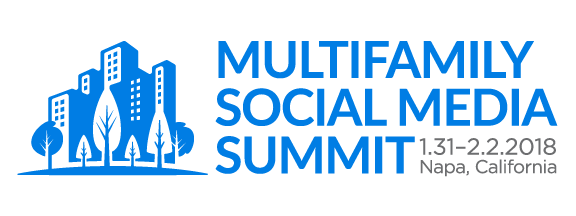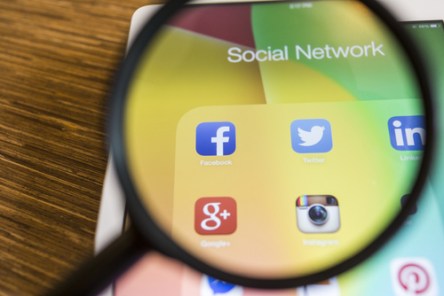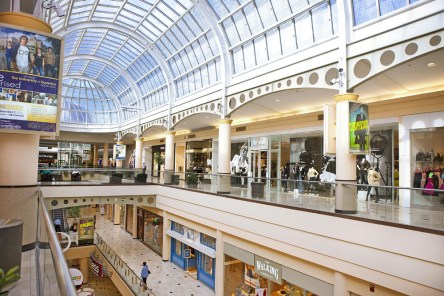Recent world events surrounding COVID-19 have led us all to adopt new consumer behaviors, and it’s likely that many of these behaviors will stick. With that in mind, it might be time for us to revisit our approach to apartment tours. Did you know that 80% of renters seriously considered just four or fewer properties during their last apartment search, according to the 2020 NMHC/Kingsley Apartment Resident Preferences Report? And 38% of renters only toured one or two communities before making their rental decision. That number is likely to grow now that we’ve all grown accustomed to doing more online. So how do you get your property on renters’ short list — especially now that they’re more likely to be influenced by online content than in-person experiences — and secure more tours? Keep reading for three data-driven tips for getting more property tours, whether virtual, self-guided or led by an agent. Then, watch a video from our “Moments of Genius with Drew Davis” series to learn how you can create a better virtual experience to attract renters who are actively searching for apartments. Provide unit-level photos & details Renters in the same survey were asked, “What would you need to see online to rent an apartment without seeing it in person?” The top three answers were: 83% said unit photos 64% said community/amenity photos 64% said unit location within the community That’s right. Just like other online purchases, your prospects want to see exactly what they’re getting for their money. To get them to tour (or lease online, sight unseen), you need to make sure that your property website is attractive, user friendly and full of pictures, including an accurate property map. Unit-level photos and video tours create an experience that not only shows the unit but also builds a foundation of trust for your brand and leasing associates. Additionally, property maps with unit-specific locations help prospects envision life in their new home on your property. Are they close to the pool? Do they have a sunset view? The more supporting material you can provide, the quicker prospects will be able to mentally move-in. “Did you know that roughly 60% of searches are mobile? That means a lot of web visitors are viewing your site on their phones,” said Catriona Orosco, director for RENTCafé Reach. “Be sure to include vertical photos as well as horizontal ones to give them a better viewing experience.” Add online appointment scheduling & tour options 80% of renters said they would use online appointment scheduling in their next apartment search. Online appointment scheduling accommodates busy renters who don’t have time or simply don’t want to call during office hours. After all, consumers are used to booking everything from restaurant reservations to DMV appointments online. Data shows that self-scheduled appointments convert at a high rate. In fact, QuadReal, a RENTCafé client, found that 33% of its self-made appointments converted to leases. Additionally, another 59% of surveyed renters said they wanted self-navigated virtual tours, and 26% wanted real-time video tours done through FaceTime or a similar service. Adding these options to your website or as part of your leasing agent follow-ups will help you meet the needs of a greater range of renters. Offer self-guided tours Of the 370,000 survey participants in the NMHC study, 16% of renters said they would prefer a self-guided tour, while another 15% indicated no preference between self-guided or community-staffed tours. That’s almost 115,000 prospects who would happily tour your property unguided, expanding your tour offerings and giving your staff more time to assist guests and residents with urgent needs. And that study happened pre-pandemic. A more recent survey of 4,974 apartment shoppers on RentCafe.com revealed that 70% would take a self-guided tour now. Why do some prospects prefer self-guided tours? Their responses were almost equally divided between these four reasons: It’s more convenient for their schedule (to book tours outside...
Creating Community
Bringing Residents Together Online
Traditionally, creating a sense of community has been a great way to make residents feel at home, leading to positive reviews, referrals and increased renewals. Multifamily properties host happy hours, movie nights and exercise classes to help renters connect with each other and the property team. They create and update shared spaces and amenities to make sure they are comfortable and welcoming. But how do you create a sense of community when people can’t gather? Property managers everywhere are asking this question now because of the social distancing measures put in place during the COVID-19 pandemic. We’re here to help. First, watch a video from our new “Moments of Genius with Drew Davis” series to get creative community building tips you can use right now. Then, see what the award-winning team at Bozzuto is doing. And finally, discover tech tools that can help bring your residents and team members together. 6 Creative Ideas Watch this short, five-minute video from Drew Davis to learn six creative ways and four key principles to foster community at your properties — even when we can’t all be in the same place. Drew is one of the world’s top marketing experts. He is working closely with us to share monthly tips specific to property management as we navigate this rapidly changing market together. Wasn’t that fun and inspiring? Drew is just the shot of positive energy we need right now, and we’re excited to see what he has in store for us. Subscribe to “Moments of Genius” now to see new episodes when they’re released. #BozzutoStaysHome When stay-at-home orders started getting handed down, the team at Bozzuto knew they had to spring into action. “We asked ourselves, ‘How do we continue to provide value to our residents when they can’t use the amenities?’” said Nicole Wells, content marketing manager for digital marketing and strategy at Bozzuto. #BozzutoStaysHome was the result, an online program that connects residents, includes the community and celebrates the idea of sanctuary, ultimately promoting shelter-in-place behaviors to flatten the curve. It includes a calendar of weekly virtual events led by community partners like yoga classes and cooking demonstrations as well as curated playlists designed to lift spirits and nurture a sense of connection. Events are shared live on Facebook and Instagram. Facebook Live events like this Vinyasa yoga class are recorded and shared so anyone can watch anytime, racking up hundreds of views. “To get started, we put together a cross-team task force. We asked our residents what they wanted to see,” shared Wells. Once the concept started coming together, “We created assets for our communities to use so they don’t have to do that extra work themselves. They already have enough to focus on right now.” With more than 400 posts using the hashtag on Instagram in just a few weeks and hundreds of viewers to their live and recorded events, #BozzutoStaysHome is picking up traction. “Bozzuto is helping residents engage in a little bit of fun at home during quarantine,” said Wells. “They’re receptive to that, and we’re happy to be a bright spot.” Tech That Connects People can’t participate in your community engagement efforts if they don’t know about them. In the words of Drew Davis, “Make sure your residents know where to go for the latest information about your property and the fun things you’re doing to keep people safe and connected.” With the RENTCafé resident portal and RENTCafé Resident app, you can quickly and easily share information about social distancing efforts and upcoming online events. You can post events to your community calendar and bulletin board, send survey emails and even schedule push notifications if your residents have opted in on the app. Both the portal and the app help your team stay connected while cutting down on face-to-face interactions by taking communications, payments and work orders online. With a 4.8 star rating and more than...
Mobile Branding Matters
Your Brand in Renters’ Hands
Take a guess. How much time do you spend on your phone every day? Add up all those downward glances, text replies, phone calls and photo filters. If you’re like the average American, you spend 5.4 hours on your smartphone. And if you’re like me, that’s way more than you expected. Those numbers come from a recent study asked 2,000 smartphone users to check their phone settings and report their screen time. Not only did the study reveal just how attached we all are to our devices, but it showed that usage across generations is similar. Millennials spend only a little bit more time on smartphones (5.7 hours) than baby boomers do (5 hours). Over 50 times a day, we’re checking our phones. This year, Gartner anticipates that there will be over 20 billion connected devices. Just imagine how much more dependent we’ll be as these tools continue to pervade our homes and habits. Smart devices have led to incredible innovations, and they’re changing our lives like very few other communication technologies have before. By far one of the biggest differences is the way we interact with businesses. Why grab your car keys or dial a support line when the services you want are available at your fingertips in a mobile app? We now spend about 90% of our smartphone time in apps. Remember, that’s hours of every day. So for businesses looking to stay competitive, your mobile presence has to be top-notch. Of course, that goes for multifamily businesses too. You’ve spent so much time and money defining your brand strategy and designing your physical properties. Shouldn’t your mobile apps match? Put your brand in the palm of your residents’ hands Your residents are on mobile, so you should be too. Take advantage of this opportunity to connect with residents in the channels they prefer. “But wait,” you might say. “What about our company website? Doesn’t that work on mobile too? Why do we need an app?” Mobile websites are a valuable resource, but they can’t do everything a native mobile app can. Your mobile website is most often a shrunken version of the desktop website, accessible only from a browser and unable to offer a unique user experience or leverage phone capabilities like GPS, cameras or notifications. To top it off, consumers simply prefer mobile apps – by a large margin. One report suggests up to 85% of people prefer apps over mobile sites. Why? Convenience, speed and ease of browsing. It’s not just a matter of preference either. Apps have shown practical results as well. The conversion rate for apps is more than three times higher than on mobile websites. And if the app is poorly designed, 55% of people say it’d put them off using a company’s products or services, and nearly as many would be less likely to recommend the company to others. Clearly, your mobile app experience matters. It’s why we’re excited to introduce MyCafé by RENTCafé. The new white label mobile app for residents helps you promote your brand on the devices they use every day. Build awareness for your business and offer residents the convenience they expect in an app you own. You can brand the look and feel of the entire experience: Pick an app name that renters recognize Select colors to reflect your brand Feature images of your own properties Upload an icon that stands out Customize menu options to fit your needs MyCafé has the same powerful and popular features that are built into our standard RentCafe Resident app. Your renters can submit maintenance requests, make online payments, reserve amenities, interact with neighbors and more, all from their smartphone. And your property managers have the ability to offer lease renewals and electronic signatures on the go, with push notifications to let residents know when action is needed. If your property already uses RENTCafé Resident, you won’t have to...
Multifamily Social Summit
Do Good + Build Brand Trust
As a firm believer in the value of social media for real estate businesses, Yardi returns to the Multifamily Social Media Summit in Napa this year as a key sponsor and content partner. The conference is the industry’s only event targeted for property management firms with a focus on leveraging social media and content marketing to retain and attract new residents. The event will be held at the Meritage Resort and Spa from January 31-February 2, 2018, and sessions will include a mix of business and technical topics that focus on social media implementation, measurement and return on investment. Communication That Builds Trust By now it’s no secret that if you want to be relevant, you need a social media presence — and to establish a meaningful one, you need to become a storyteller utilizing all communication channels available. Yardi is broadening its participation this year with a workshop entitled “Do Good on Social: Building Brand Trust,” about the importance of communicating corporate social responsibility initiatives and values via social media, and showing commitment to the communities you serve. Connecting with your customers on a human level can help strengthen business relationships. Your customers are no doubt immersed in social media channels for almost everything they engage in every day, from personal relationships and peer networking to business and transactional activities. Learning from social media experts outside of the real estate sector at the Summit is a unique opportunity that delivers value through practical advice that attendees can take with them. Esther Bonardi, vice president of marketing at Yardi, comments, “We consistently support this conference because we hear from accomplished social media and digital marketing practitioners from outside the apartment industry, and attendees gain actionable takeaways they can implement when they return to the office.” Expert Insights and Strategies For real estate businesses as for companies in any industry, true digital disruptors succeed by effectively using new communication technologies — and that requires insight and planning. This year’s keynote speakers will cover how to keep up with today’s consumer and what social media strategies deliver the best results. Featured speakers are James McQuivey, Vice President and Principal Analyst at Forrester, and Beverly Jackson, Vice President, Social Media and Content Strategy at MGM Resorts International. Other speakers on the agenda will cover hot topics from using Snapchat to creating video ads and mastering social media storytelling, and represent companies including HubSpot, Conversion Science, Flint Analytics, Merrick Towle Communications, Crescenzo Communications, Northstar Travel Group, and Golin NY. Get additional information on the Multifamily Social Media Summit. Learn more about Yardi’s social media and marketing tools for multifamily real...
Emoji Marketing
Speaking The Universal Language
Do you speak emoji? If you don’t, you might be finding yourself increasingly in the minority as emojis—defined by Google as “a small digital image or icon used to express an idea, emotion, etc., in electronic communication”—gain momentum as a form of universal, nonverbal communication. These sometimes-silly little pictures are being embrace by more than just Millennials as a way to express feelings, moods, actions, and more in a way that transcends language boundaries. A recent study by Emogi found that 92% of online consumers use emoji. The report found that people use emoji to help them be more accurately understood. It also looked at the connection between emoji and digital advertising. Of course, researchers aren’t the only ones who’ve noticed emoji use on the rise. Social media platforms and even retail brands have found exciting new ways to leverage the popularity of emojis in 2015. Brands That Embraced Emojis In 2015 Instagram allows emojis as hashtags. In April, Instagram released an app update that enabled users to include emoji in hashtags with the reasoning that “…just as we share photos and videos, we use emoji to communicate emotions and feelings in ways that anyone can understand, regardless of language or background.” Dominos lets hungry people order pizza by emoji. The future is now, people! This past May, Domino’s debuted a system that allows customers to order pizza simply by tweeting the pizza emoji to @Dominos, followed soon after by the ability to order by text too. Ready for a pizza party? Here’s your how-to guide. Chevy publishes a press release… written entirely in emoji! Chevy’s June press release about the 2016 Chrevrolet Cruze was issued in emoji form with the hashtag #ChevyGoesEmoji, sparking a wave of funny decoding attempts across the Internet. They...
Quick Social Tips
For native marketing success
The basics of native marketing for social media have helped you get started. It’s the nuances of daily content development that will firmly establish your roots and nourish respect among your fan base. We’ve got four content tips that can grow your social media from a seedling into a sprawling success! Blend In But Don’t Fade Fresh, frequent content is a great first step. Now focus on creating content that impacts viewers in milliseconds. When scrolling through their feed, does your content stand out? On one hand, it shouldn’t stand out. The style of your image should blend with the style of the images around it. A stock photo may work for LinkedIn but it’ll be shunned on Snapchat. An immaculate image for Pinterest may garner less interest from artsy, down-to-earth Instagram users. Your images should blend into the community. On the other hand, you don’t want your content to fade into the background. How do you know when you’ve struck the balance? When you’ve created an image that you and people that you know would want to retweet, share, or repin: images that are bright and bold, that reflect the energy of a crowd or movement, that use interesting angles or lighting, or those that simply make you stop and smile. Those are all features that catch your attention, right? Deliver that to your fans. Establish Quick Brand Identity Users should not have to read much or focus too hard to identify your brand. If they have to find your little profile icon on the left of a post, you’ve made them work too hard. Establish quick brand identity by adding your logo as a watermark or having your logo or community name visible within the background of the image. If your community...
Minimizing Risk
Building a brand
In the days after Malaysia Airlines flight MH370 mysteriously disappeared en route to Beijing in mid-March, PR and crisis management experts around the world watched the news and cringed. “I’m not so sure that you stay off their airline or their brand is ruined, but right now I don’t feel too good about Malaysia Airlines because of their very weak response,” said Roger Conner, an expert in crisis management for the hospitality industry, 10 days after the flight went missing. Conner’s expert opinion—he went through 9/11 and multiple other international terrorism incidents while vice president of communications for Marriott—was reinforced in the media. Canada’s National Post called it a “master class in crisis mismanagement,” both on the part of the airline and the Malaysian government. Malaysia Airlines was lauded for introducing a brand-agnostic website to provide crisis updates on the mysterious disappearance, but criticized for not working fast enough to determine exactly what had happened with the flight. And families of the passengers went so far as to emotionally and publicly protest the lack of information available while they waited anxiously for news in Beijing, the flight’s intended destination. With the news that the flight had been lost in the Indian Ocean, their complaints only intensified. There are many differences between the airline industry and real estate, but dealing with an unexpected crisis situation – one that could irrevocably change how the public views your brand – is a concern for any business. As the global economy expands, as dependence on technology becomes pervasive and social media saturation is a fact of life, companies find themselves with more risk factors to control than ever before. Preparation, brand management and the hopefully unneeded crisis response are now essential parts of any business toolkit. Increased Global Risk...







